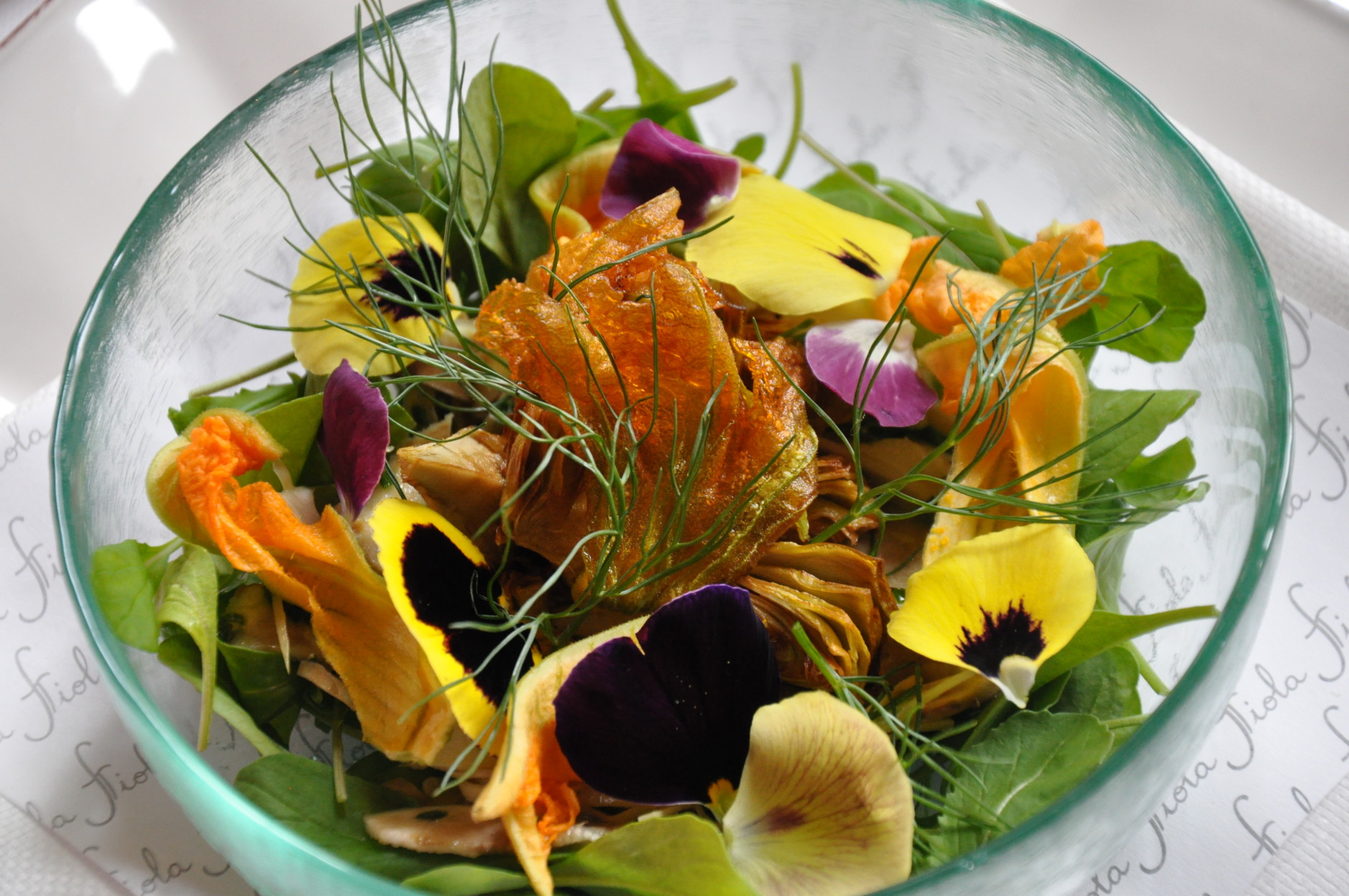
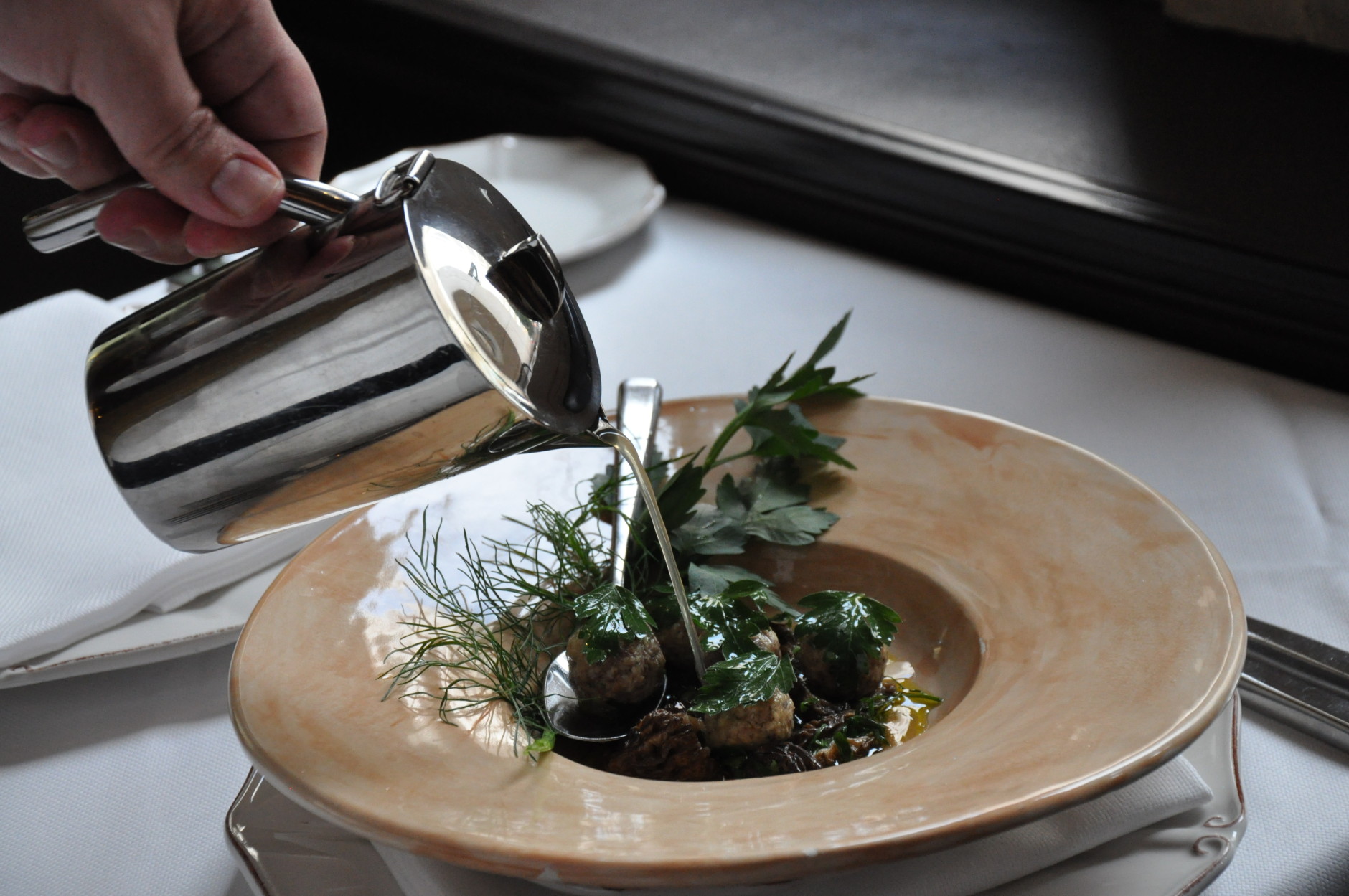
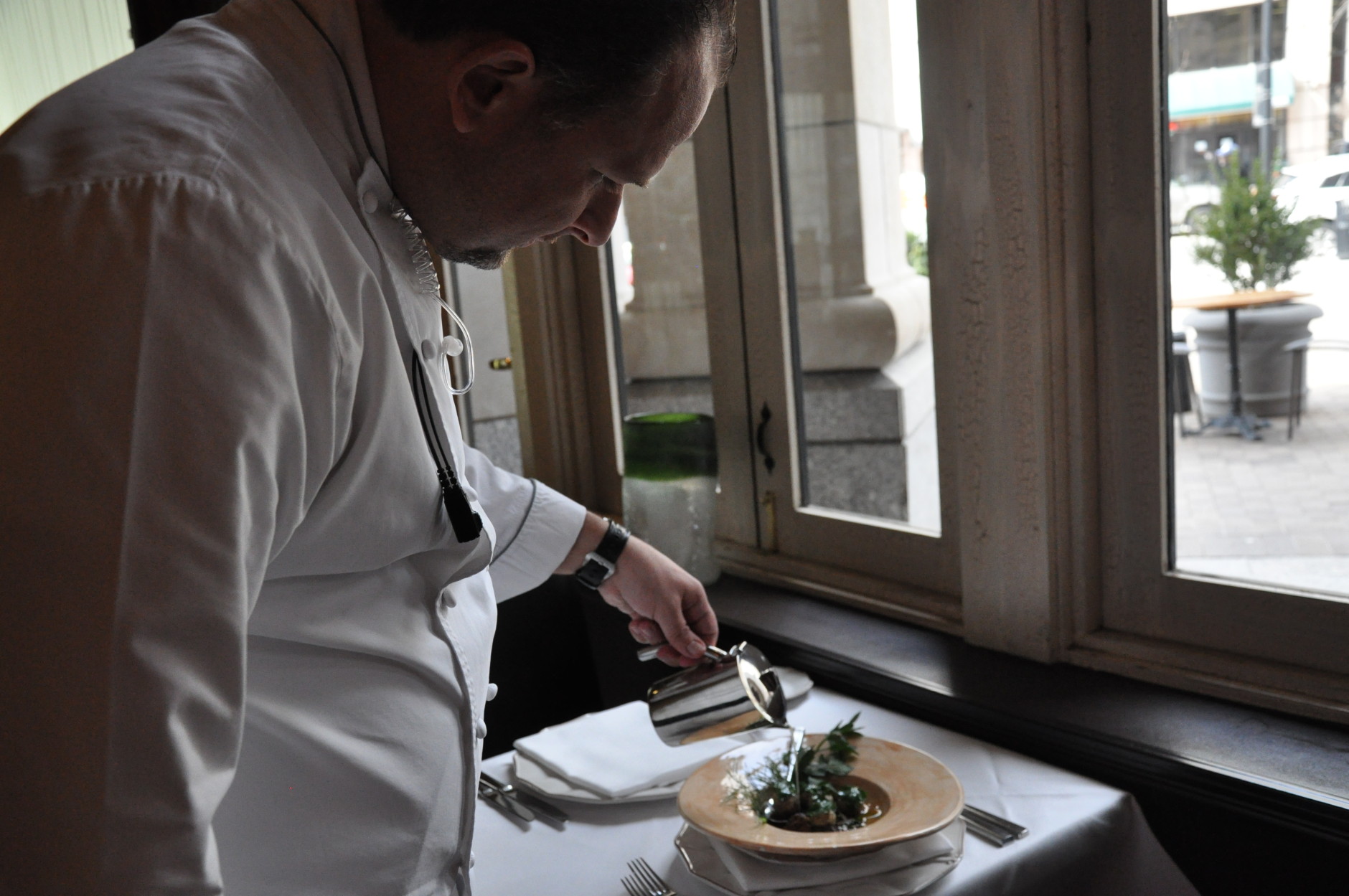
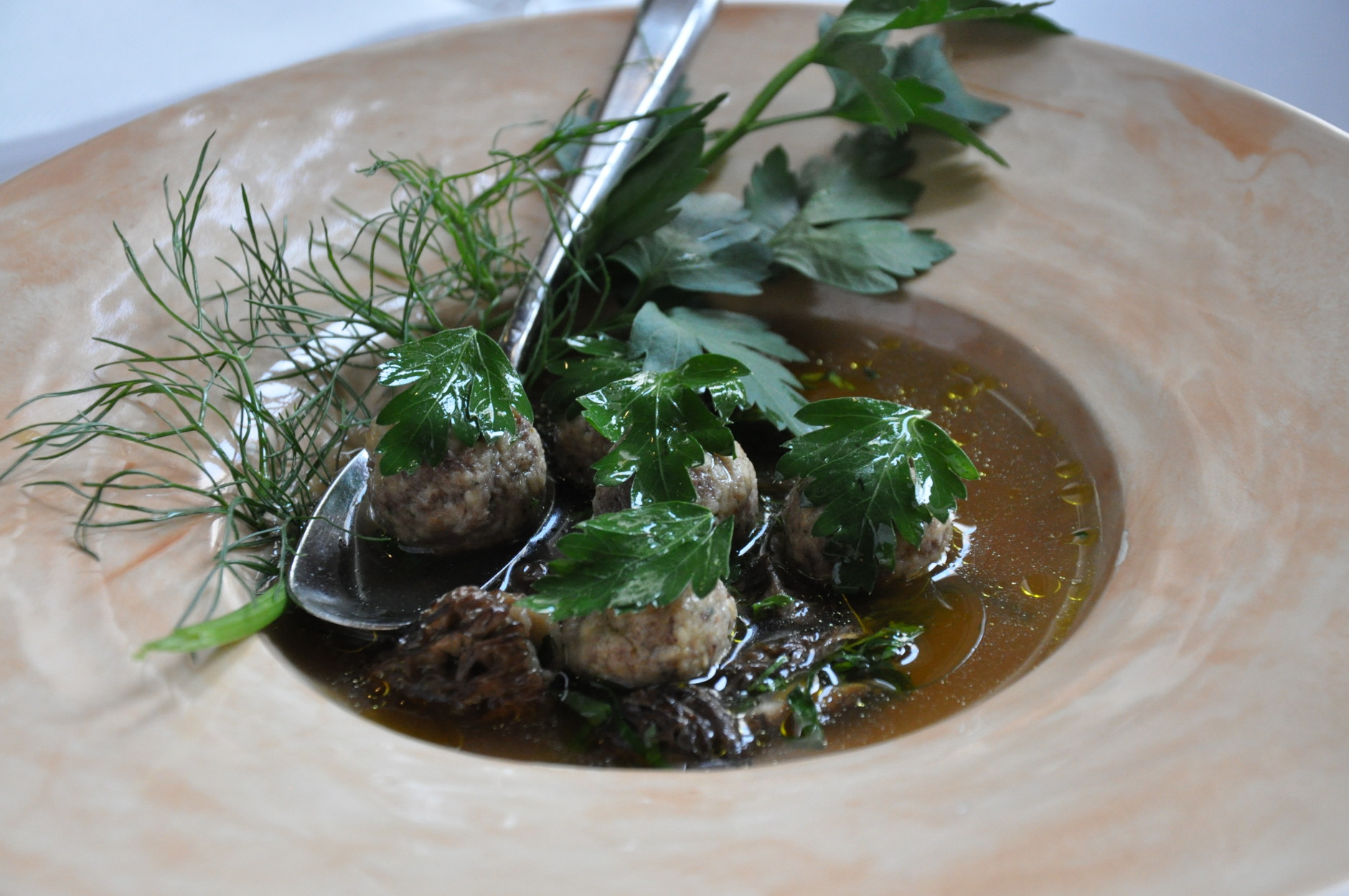
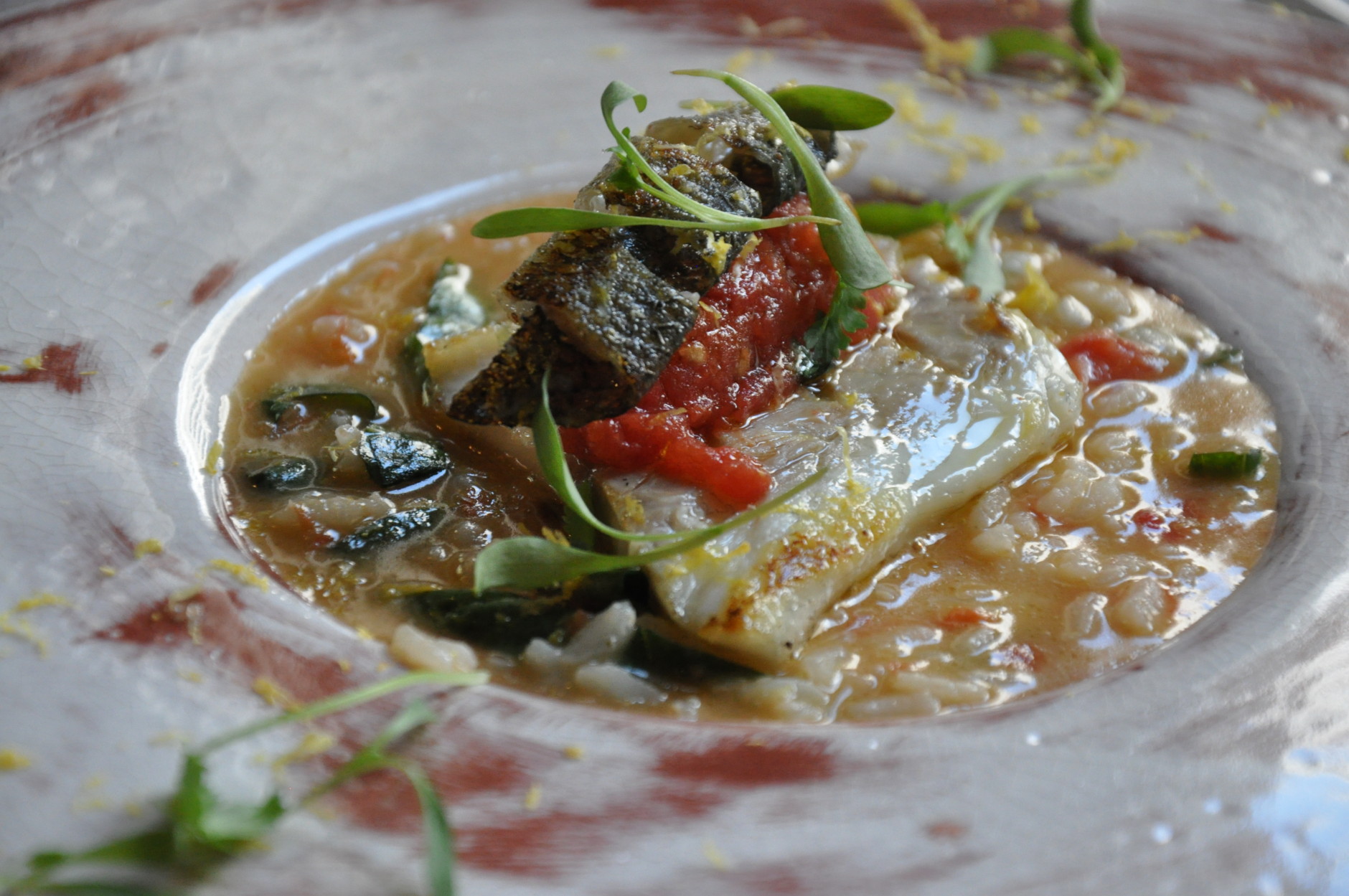
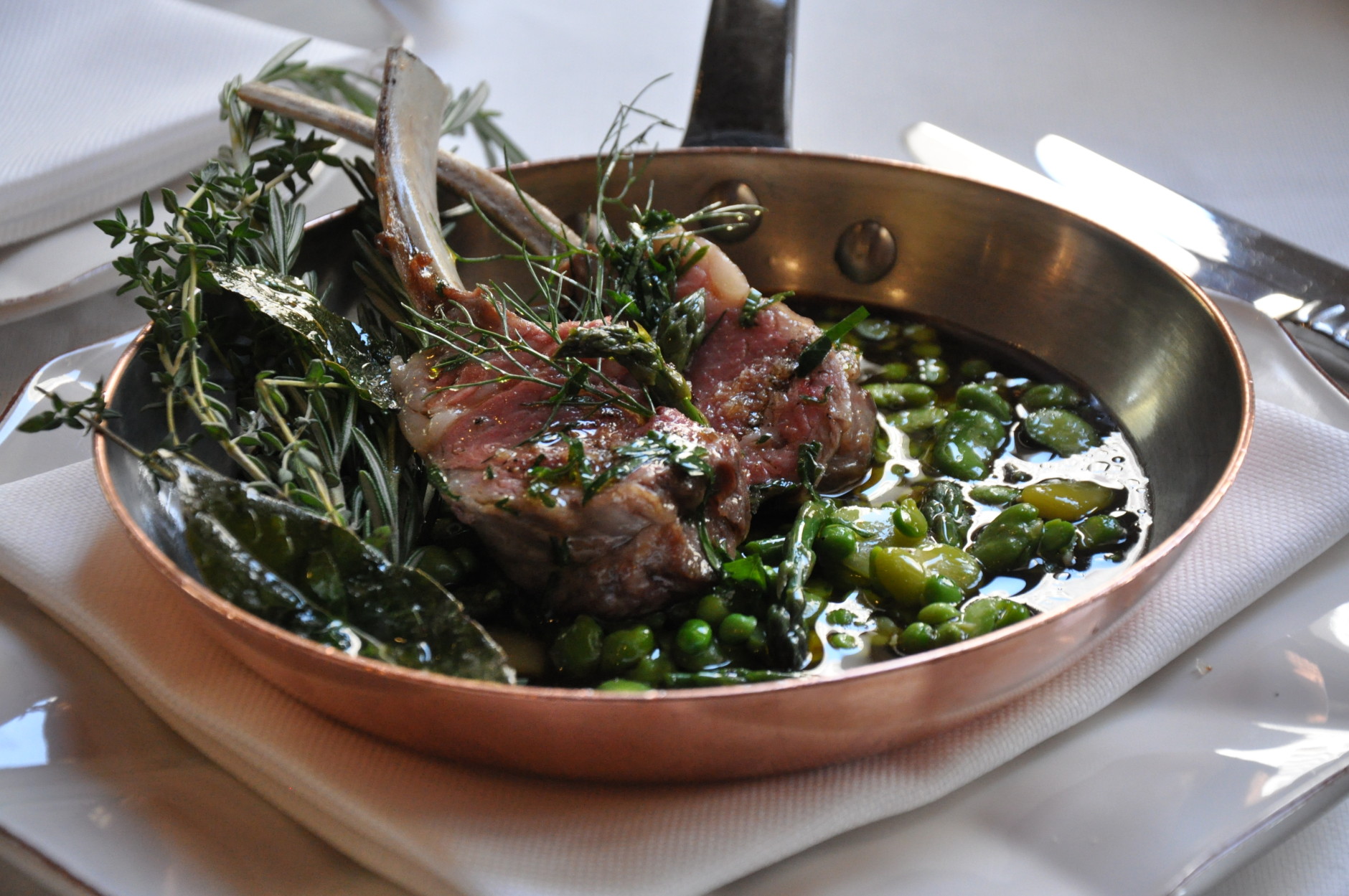
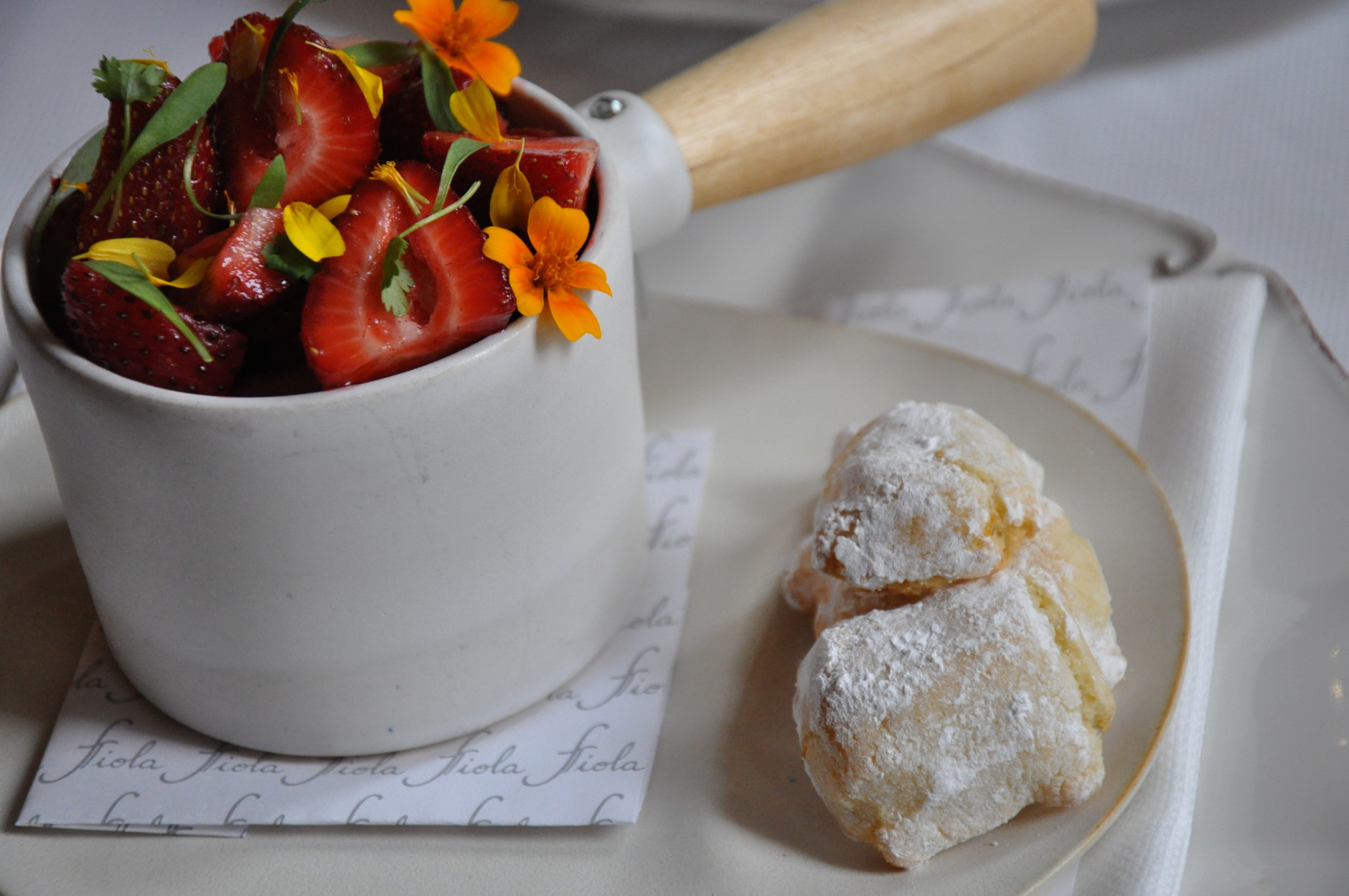
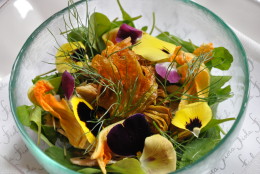
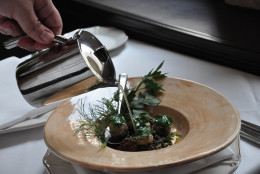
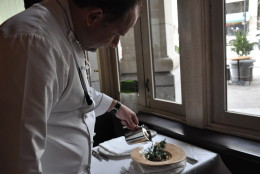

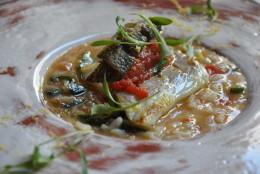
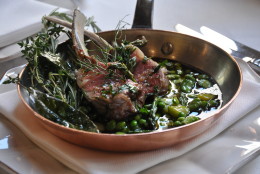
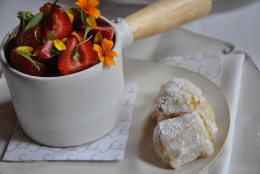
WASHINGTON — The kitchen at Fiola on Pennsylvania Avenue, in Northwest D.C., is bustling. Chef Fabio Trabocchi and his team are busy preparing for the restaurant’s second Passover Seder.
But unlike many traditional American Seder spreads, Chef Trabocchi’s does not include gefilte fish, brisket and potatoes. His menu is influenced by the Jewish community of the Marche region of Italy — where he was raised.
For centuries, Jewish communities have played an integral role in Italy’s history, with a strong presence in Rome since the second century B.C. And over the years, these communities embraced Italian cooking techniques and traditions.
“Their cuisines were adopted to the products that were available in the various regions in Italy,” Trabocchi says.
But that culinary exchange worked both ways. “That does not mean, however, that Jewish cooking has not blended into Italian cooking. Over centuries, things that we take today as Italian cooking … are actually rooted in Jewish tradition.”
Take, for example, the common use of olive oil in Italian cuisine. Trabocchi explains that the Jewish communities in Italy began using olive oil as a cooking substitute for pork fat, “which, centuries ago, was very often used in Italian cooking,” he says.
The use of almonds in desserts and pastry is another aspect Jewish communities brought to Italian kitchens, as is the fried artichoke — a dish Trabocchi uses to launch his Passover Seder menu.
The baby artichokes — called carciofi ally Giudia, which in Italian means “in the way of the Jewish”– are fried in a shallow pan of olive oil and brightened by herbs, arugula and squash blossoms.
The next course on his menu pays homage to one of the better-known Jewish dishes: matzo ball soup. Years ago, when working in a kitchen in northern Italy’s Trentino Alto Adige, Trabocchi discovered something very similar to matzo balls, called canederli. And these canederli are the inspiration for his Seder soup, made of matzo meal, fresh herbs, extra-virgin olive oil, morels, black truffle and a capon consommé.
“So we’re taking the idea of the matzo ball; we’re respecting the tradition … but we’re adding ingredients to elevate the whole experience of the matzo ball dish,” he says.
A dairy-free risotto and a kosher rack of lamb also round out the menu, although it should be pointed out that the whole menu is not kosher.
“In order to give body and consistency to what we know is the creaminess of risotto, since we don’t have dairy, we add a slow-cooked tomato into it,” Trabocchi says. The risotto is then finished in fish stock and topped with a branzino.
Dessert also consists of a Jewish-Italian delicacy: ricciarelli cookies — an almond, egg white and sugar cookie, served with strawberry sorbet and fresh strawberries.
And while Fiola celebrates Passover with an Italian twist, around the globe the holiday will be celebrated in many different culinary representations.
“Jewish food is so varied; it’s dependent on where the Jews lived. So they took on the cuisines of the countries where they lived and then adapted it to the laws of keeping kosher,” says Susan Barocas, founding director of The Jewish Food Experience.
For example, many Jewish Americans will celebrate Passover with a traditional heroset made of apples, walnuts and a sweet red wine — a common Eastern European custom. But Jews in Morocco might add apricots, dates and figs into their heroset; a Persian version may contain pears, apples, mangos, bananas, oranges and four kinds of nuts, Barocas says.
The Jewish-American table is evolving too, as many families deviate from the traditional Eastern European spread. Sure, there may always be some type of brisket or some iteration of matzo ball soup, but more home cooks are incorporating flavors and traditions from other global communities.
Barocas says the different spices and new recipes are always a welcome change, but for her, Passover is a great opportunity to spring-clean the pantry and embrace fresh, seasonal food.
“Some people think of Passover as a holiday where you can’t eat X, Y and Z. And I always think of it as a holiday where you really take time to be conscious and mindful of what you’re eating and expand outward and really make some different kind of dishes. It’s a great time to eat fresh fruits and vegetables,” she says.







